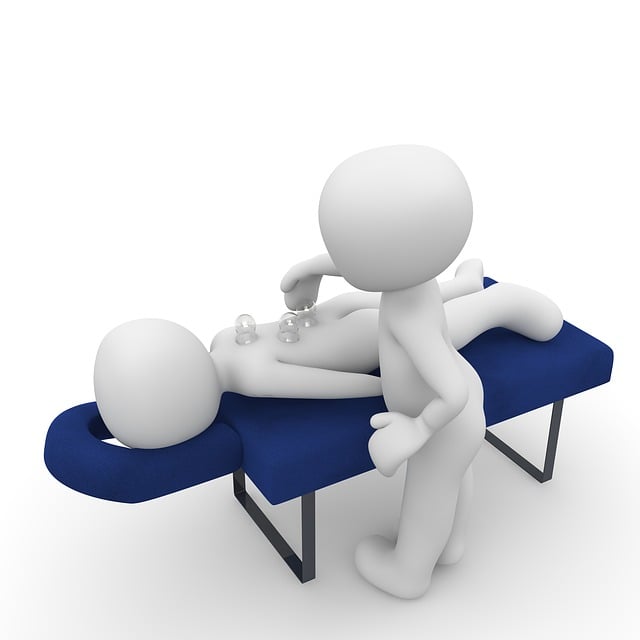Short-term Cognitive Behavioral Therapy (CBT) is an efficient, structured approach to mental well-being, focusing on specific issues within 10-20 sessions. By identifying and changing negative thought patterns, CBT empowers clients to develop practical coping strategies, improve emotional regulation, and enhance problem-solving skills. Effective for anxiety, depression, PTSD, and other conditions, CBT offers immediate relief and potential lasting benefits, making it ideal for busy individuals seeking goal-oriented therapy. Regular practice strengthens the application of CBT principles, fostering resilience against future challenges.
“Uncover the power of Short-Term Cognitive Behavioral Therapy (CBT) – a game-changer in mental health care. This concise overview explores how CBT, known for its long-term benefits, adapts to address immediate concerns. From understanding core principles to uncovering effective techniques, we demystify this dynamic approach. Learn how time-limited sessions can lead to lasting positive changes, who benefits most, and practical tips for integrating CBT into daily life. Discover the transformative potential of this CBT therapy in shaping a happier, healthier you.”
Understanding Short-Term CBT: A Brief Overview

Short-term CBT, or Cognitive Behavioral Therapy, is a focused and efficient approach to mental well-being. It’s designed to help individuals address specific issues within a limited number of sessions, typically ranging from 10 to 20 meetings. This therapeutic method identifies the connection between thoughts, feelings, and behaviors, aiming to alter negative thought patterns and replace them with healthier alternatives.
By targeting current challenges and goals, CBT empowers clients to develop practical coping strategies and gain new insights. It encourages active participation, where individuals learn to recognize and challenge their negative or distorted thinking, leading to improved emotional regulation and enhanced problem-solving skills. This brief yet powerful therapy has proven effective for a wide range of concerns, from anxiety and depression to phobias and post-traumatic stress disorder.
Key Principles of Cognitive Behavioral Therapy

Cognitive Behavioral Therapy (CBT) is a therapeutic approach that focuses on identifying and changing negative thought patterns and behaviors. Its key principles revolve around understanding the connection between thoughts, feelings, and actions. CBT posits that our thoughts significantly influence our emotional state and subsequent behaviors. By challenging and modifying unhelpful or distorted thinking, individuals can experience improvements in their mood and behavior.
This therapy encourages patients to actively participate in their healing process. It involves setting specific goals, learning coping strategies, and acquiring new skills to manage symptoms effectively. CBT is structured and time-limited, typically consisting of a series of sessions where therapists guide clients through the identification of negative thought cycles and help them replace them with healthier alternatives, ultimately leading to long-lasting positive changes.
Benefits and Effectiveness in Short-Term Applications

Short-term cognitive behavioral therapy (CBT) has gained significant recognition for its numerous benefits and proven effectiveness in various mental health contexts. One of the key advantages is its efficiency; CBT focuses on identifying and changing negative thought patterns and behaviors within a relatively short period, making it ideal for individuals with busy schedules who require quick yet impactful results. This approach has shown remarkable success in treating conditions like anxiety disorders, depression, and post-traumatic stress disorder (PTSD). By teaching clients practical coping strategies and challenging distorted thinking, CBT empowers them to manage their symptoms effectively even after the initial therapy sessions conclude.
The effectiveness of CBT is evident in numerous studies that demonstrate its ability to produce long-lasting improvements. This form of therapy encourages active participation from the client, fostering self-awareness and personal growth. Moreover, it provides tangible tools that individuals can use throughout their lives, promoting resilience against future challenges. With its structured nature and evidence-based techniques, CBT offers a powerful solution for those seeking efficient and effective mental health support.
The Process: How Does It Work in a Time-Limited Framework?

Short-term cognitive behavioral therapy (CBT) focuses on helping individuals address specific issues within a limited time frame, typically 10 to 20 sessions. The process starts with identifying target symptoms or problems that the individual wants to overcome. Therapists work collaboratively with clients to set realistic goals and develop strategies tailored to their unique needs. Each session is structured to build upon the previous one, fostering a deeper understanding of thoughts, feelings, and behaviors.
Through interactive discussions and practical exercises, CBT helps individuals challenge negative thought patterns and replace them with more balanced and adaptive perspectives. This involves learning coping mechanisms, problem-solving skills, and strategies for managing stress and emotions. The therapist provides guidance, support, and feedback, helping clients apply these techniques in their daily lives. By the end of the time-limited framework, individuals gain insights, develop resilience, and equip themselves with tools to maintain long-term mental health and well-being.
Common Short-Term CBT Techniques and Strategies

Short-term CBT often employs a variety of effective techniques tailored to address specific concerns in a timely manner. One common strategy is cognitive restructuring, where therapists help individuals identify and challenge negative thought patterns. This involves exploring alternative, more balanced perspectives to foster healthier thinking habits. Another key technique is behavioral activation, encouraging clients to engage in activities that promote well-being and reduce symptoms of anxiety or depression.
Additionally, mindfulness practices are often integrated into CBT sessions. Mindfulness helps individuals stay present, observe their thoughts without judgment, and develop a greater sense of self-awareness. Exposure therapy is also utilized for specific phobias or anxieties where clients gradually confront feared situations in a safe, controlled environment. This technique empowers individuals to manage their responses and reduce avoidance behaviors.
Who Can Benefit from This Approach? Target Audiences

Short-term cognitive behavioral therapy (CBT) is a powerful tool that can benefit a diverse range of individuals. This therapeutic approach is particularly effective for those dealing with specific mental health challenges, such as anxiety disorders, depression, post-traumatic stress disorder (PTSD), and even certain eating disorders. CBT focuses on identifying and changing negative thought patterns and behaviors, providing clients with practical strategies to manage their conditions in the short term and often leading to lasting improvements.
The target audiences for CBT therapy are adults who want to take control of their mental health and well-being. This includes students facing exam stress, professionals struggling with work-related issues or burnout, individuals dealing with relationship problems, and those coping with the aftermath of traumatic events. CBT is also suitable for people who prefer a structured, goal-oriented approach to therapy and are motivated to actively participate in their healing process.
Integrating CBT into Everyday Life: Practical Tips

Integrating Cognitive Behavioral Therapy (CBT) into daily life can seem daunting at first, but with practice and commitment, it becomes a natural part of your routine. One effective strategy is to start small, incorporating CBT techniques into your existing activities. For instance, when facing a challenging situation, take a moment to identify and challenge negative thoughts before reacting. This simple step allows you to gain perspective and respond in a more constructive manner.
Keep a journal to track your thoughts, feelings, and behaviors. Writing down your experiences can help you recognize patterns and triggers for distress. As you become more attuned to these connections, you’ll develop the skills to modify them, fostering positive changes in mood and behavior. Regular practice strengthens your ability to apply CBT principles instinctively, making it a powerful tool for managing stress and improving overall well-being.
